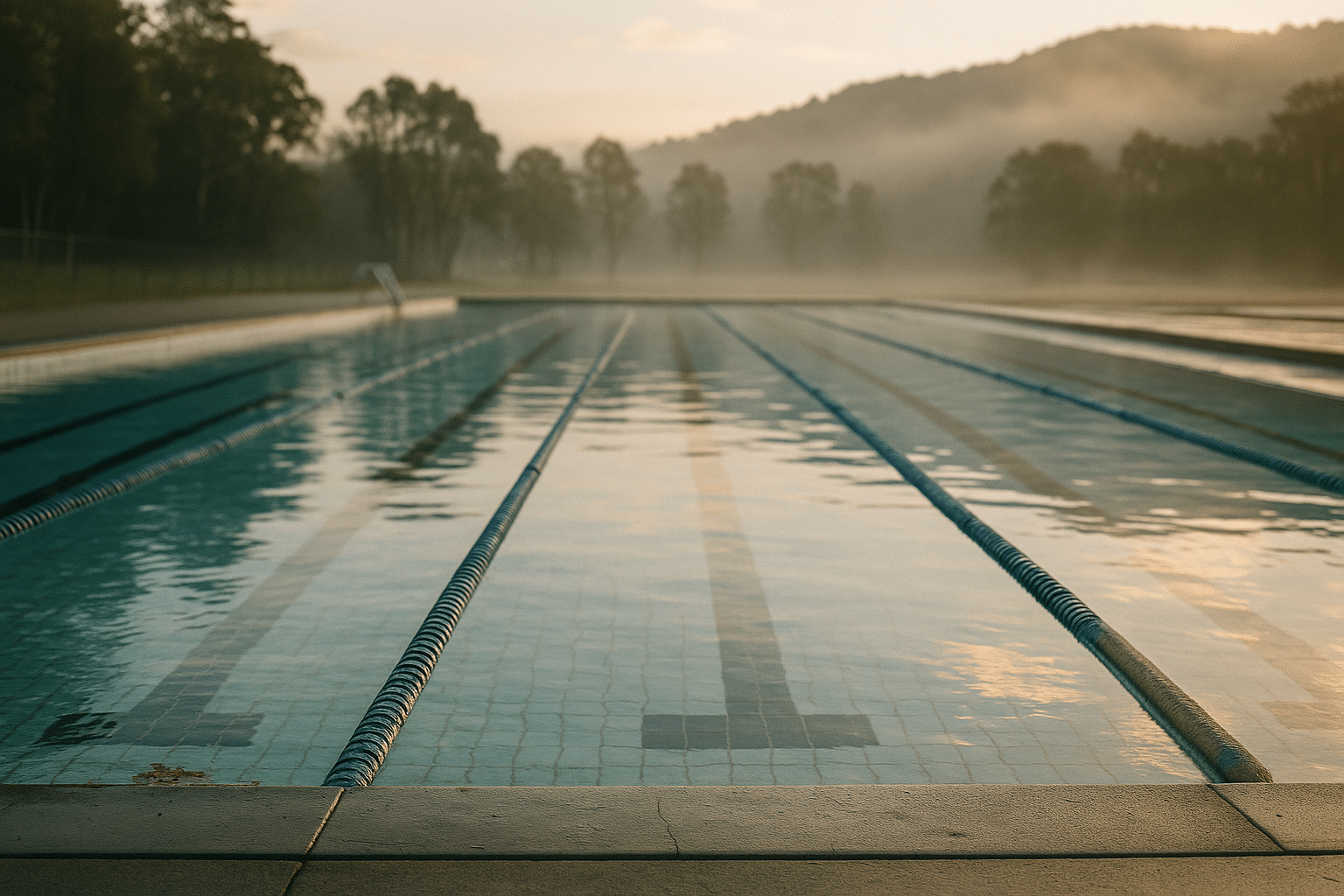
Explore the world of swimming
Swimming is one of the most accessible, skill-building, and health-supporting activities on the planet. Whether you wade in for relaxation, train for performance, or learn to be safer around water, swimming meets you where you are. Its low-impact nature welcomes all ages, while its technical depth can challenge even the most experienced athletes. As a life skill, it improves safety and confidence; as a sport, it develops strength, stamina, and focus; and as a pastime, it offers a quiet form of joy that flows with every breath and stroke.
In this article, we dive into swimming’s health and cognitive benefits, explore stroke mechanics, outline practical training ideas, compare environments and gear, and highlight culture and access. Along the way, we’ll keep one eye on evidence and another on the simple pleasure of moving through water.
Outline: What This Guide Covers
– The Lifelong Benefits of Swimming: How moving in water supports heart health, joints, and mental well-being, with practical safety basics.
– Mastering the Strokes: Technique building blocks for freestyle, backstroke, breaststroke, and butterfly, and how to avoid common errors.
– Smart Training Plans and Drills: Structuring sessions, pacing, and sample weekly plans for different experience levels.
– Environments and Gear: Pool versus open water, lane etiquette, safety, and minimalist equipment that supports learning.
– Culture, Access, and Lifelong Participation: Lessons, inclusive design, community programs, and environmental stewardship.
– Conclusion: A practical nudge for readers to pick an entry point and get started safely and sustainably.
The Lifelong Benefits of Swimming
Swimming delivers a notable combination of cardiovascular fitness, muscular endurance, and joint-friendly movement. Because water supports body weight, the impact forces on ankles, knees, and hips are substantially reduced compared with many land activities. This makes swimming a reliable option for people managing joint sensitivity or returning from certain injuries, as well as older adults looking to stay active without excess strain. Regular participation aligns with broad public health guidance recommending at least 150 minutes of moderate aerobic activity per week; many swimmers find that two to three sessions, plus a short weekend dip, can meet these targets comfortably.
From an energy-expenditure perspective, lap swimming at a moderate pace often falls within a wide range depending on body mass, stroke choice, water temperature, and efficiency. Freestyle at a steady effort can burn several hundred calories per hour, while more demanding sets or less efficient technique can raise that number. Importantly, consistent practice tends to improve efficiency—fewer wasted movements and better body alignment—so swimmers often feel less fatigued while maintaining or even increasing total workload over time.
Beyond the body, swimmers frequently report improvements in mood and stress management. The rhythmic pairing of breath and movement can produce a calming effect similar to meditative practices. Cool water provides sensory input that many find refreshing and focusing. Studies of aquatic exercise suggest benefits for perceived stress and sleep quality, and group environments (like lap lanes with regulars or lessons with peers) add social support, which correlates with long-term adherence.
Safety is part of swimming’s value proposition. Foundational skills—floating, sculling, treading, and breath control—improve confidence and can reduce risk around water in daily life. Even experienced swimmers benefit from safety refreshers:
– Swim with others when possible, especially outdoors.
– Know the facility’s rules, depth markings, and exit points.
– Respect currents, weather, and water clarity in natural settings.
– Warm up gradually and finish with easy laps to reduce sudden exertion spikes.
– Hydrate: even in water, you can lose fluids through breathing and sweat.
Taken together, swimming’s low-impact nature, whole-body engagement, and mental reset create a durable, sustainable form of exercise that adapts to a wide range of goals and life stages.
Mastering the Strokes: Mechanics, Breathing, and Efficiency
Efficient swimming builds from balance, body line, and rhythm. Instead of overpowering the water, effective technique reduces drag and applies force in the right direction at the right time. Four primary strokes dominate lap swimming—freestyle, backstroke, breaststroke, and butterfly—each with its own timing, propulsion pattern, and breathing strategy.
Freestyle (front crawl) emphasizes a long body line with a stable core. Imagine gliding like a narrow arrow: a slight head-down posture aligns the spine, while a gentle rotation of the hips and shoulders reduces frontal drag. The catch—where the forearm and hand anchor against the water—works best when the elbow stays high relative to the hand, pressing back rather than down. Breathing typically occurs every two to three strokes; many learn bilateral breathing (alternating sides) to promote symmetry and better navigation in open water.
Backstroke flips the orientation but shares themes with freestyle. The hips stay near the surface, the kick remains compact, and the arms recover straight over the water. Because the face stays above water, breathing is more flexible. A common error is letting the hips sink due to a dropped chin or overreaching under the water; a slight chin tuck and steady, small flutter kick help maintain alignment.
Breaststroke is often favored for its head-above-water comfort, yet it demands precise timing. The out-sweep and in-sweep of the arms create lift and forward motion, followed by a streamlined glide. The kick—heels up toward the seat, turn the feet out, press back and around—should avoid “bicycle” motions. The power comes from both legs finishing together and a patient glide that prevents rushing into the next stroke. Exhale during the pull and inhale on the lift to keep breathing controlled.
Butterfly, while demanding, can be learned with patience and well-chosen drills. The body undulates from the chest and hips, with a two-beat kick pattern per arm cycle. A common coaching cue is to keep the head relaxed and the chest pressing the water forward, not upward. Short sets focusing on timing—pull-buoy-assisted body waves, single-arm fly, and dolphin kick on the side—help build coordination without undue fatigue. Breathing every two strokes can reduce disruption to the body line.
Across all strokes, three efficiency pillars stand out:
– Streamline: push off tight, chin neutral, arms extended; recreate that line during every stroke’s glide phase.
– Propulsion mechanics: feel pressure on the forearm and palm; avoid slipping water with a dropped elbow.
– Rhythm: pair the kick and pull so force flows continuously rather than in jerks.
Small improvements in these areas compound over time, reducing effort at a given pace and making every session more enjoyable.
Smart Training Plans and Drills: From First Laps to Confident Sets
Productive swim training balances technique, aerobic development, and recovery. Sessions often follow a structure: warm-up, skill work, main set, and cool-down. The warm-up raises core temperature and prepares the shoulders and hips; the cool-down eases heart rate and reinforces relaxed mechanics. Skill segments keep form crisp even as fitness builds, ensuring that added effort does not hard-wire poor habits.
A simple, adaptable session framework might look like this:
– Warm-up: 5–10 minutes easy, mixing strokes and kicks.
– Drills: 6–10 lengths focusing on one technical theme (e.g., high-elbow catch, streamlined push-offs).
– Main set: intervals at a controlled pace (example: 8×50 meters with 20–30 seconds rest).
– Pull or kick focus: short block to strengthen specific chains.
– Cool-down: easy swimming, finish feeling smooth rather than exhausted.
New swimmers benefit from time-based sets (e.g., swim easy for 2 minutes, rest 45 seconds) to reduce clock anxiety. As comfort grows, distance-based intervals help measure progress. Consistency matters more than single-session heroics—two or three steady sessions per week generally produce reliable gains.
Sample weekly outlines:
– Beginner: Session A: 10 minutes easy + 6×25 technique focus + 6×25 steady + easy 5 minutes. Session B: similar structure with backstroke or breaststroke mixed in. Optional third short session for kicking and floating confidence.
– Intermediate: Session A: 300 easy + 6×50 drill/swim + main set 10×50 moderate with 20 seconds rest + 200 easy. Session B: 4×100 aerobic + 8×25 fast with generous rest + 300 pull. Session C: 30–40 minutes continuous aerobic swim with a stroke change every 200.
– Advanced: Blend aerobic threshold sets (e.g., 4×400 steady), speed segments (16×25 fast, long rest), and strength blocks (pull and kick). Use descending sets to practice pacing control.
Pacing tools can be as simple as counting strokes per length to track efficiency. Many swimmers note a sweet spot where stroke count remains stable as pace increases—an indicator of improved mechanics. Recovery is equally important: shoulders appreciate mobility work, and sleep supports adaptation. Nutrition-wise, light, easily digestible carbohydrates before a session and balanced protein and carbs afterward can support training goals without overcomplication.
If progress plateaus, change one variable at a time: interval length, rest periods, or stroke mix. Maintain safety by listening for signs of shoulder strain (deep ache or pinching), and adjust technique or volume accordingly. Sustainable training prioritizes form, gradual overload, and a mindset that values many good sessions over a few all-out efforts.
Environments and Gear: Pool, Open Water, and What You Really Need
Not all water feels the same. Pools offer controlled lanes, predictable conditions, and measured distances—ideal for learning strokes, pacing, and technique. Open water adds variables like temperature, chop, sun glare, and currents; it demands navigation skills and heightened awareness. Both environments have value, and many swimmers enjoy rotating between them.
Pool basics include lane etiquette: choose a lane that matches your pace, circle or split swim as posted, and leave space when pushing off behind others. Clear push-offs and tight streamlines maximize each length and reduce shoulder load. Water chemistry varies; some facilities use traditional chlorination, others alternative systems. If your skin or hair feels dry post-swim, a quick rinse before and after, plus a simple moisturizer, can help. Clear goggles are comfortable indoors; tinted lenses can reduce glare outdoors. A silicone or latex cap keeps hair managed and improves hydrodynamics slightly by smoothing the profile.
Open water invites adventure but requires planning. Key considerations:
– Conditions: check wind, swell, water temperature, and visibility.
– Safety: swim with a visible tow float, wear a bright cap, and choose routes parallel to shore when possible.
– Navigation: practice “sighting”—lifting the eyes briefly every 6–12 strokes to fix on a landmark.
– Temperature: cold water demands gradual entry and appropriate thermal protection; exit early if shivering or coordination suffers.
– Wildlife and water quality: explore only in areas known to be safe and monitored.
Minimal gear goes a long way:
– Goggles suited to light conditions.
– A cap for hair management and visibility.
– A buoy for open water safety and rest if permitted.
– Optional training tools: fins for kick mechanics, a center snorkel to isolate body line and catch, and small paddles to provide gentle resistance. Tools should never mask poor form; use them sparingly and purposefully.
Comparing environments, pools excel for repeatability and stroke refinement, while open water builds adaptability and mental resilience. Many swimmers alternate—refining technique in the pool during the week and enjoying a calm lake or protected coastline on weekends. Either way, aim for simplicity. Well-maintained, comfortable equipment and a clear plan often yield more progress than a bag full of gadgets.
Culture, Access, and Lifelong Participation
Swimming belongs to everyone, yet not everyone has equal access. Community pools, school programs, and public lessons can bridge knowledge gaps, teaching foundational skills that reduce risk and open new recreational doors. Affordable or subsidized lesson pathways for children and adults make a measurable difference in safety and participation, especially in regions with many natural water features.
For those who did not learn to swim early, adult-focused lessons offer a welcoming path. Instructors often specialize in building comfort first—floating, breath control, and water orientation—before layering in stroke mechanics. Group formats add encouragement; private sessions can address specific barriers. Many participants discover that fear shrinks when skills grow in small, repeatable steps.
Inclusive design matters. Ramps, pool lifts, graduated entries, warm-water therapy pools, and clear signage improve experiences for people with mobility, sensory, or cognitive differences. Aquatic therapy, supervised by qualified professionals, leverages buoyancy to reduce load on joints while building strength and balance. For older adults, water walking, gentle laps, and social classes can support independence, bone health (when cross-trained with light resistance work), and community connection.
The broader culture of swimming also includes service roles. Lifeguarding and water-safety instruction cultivate vigilance, communication, and leadership. Regular in-service training—rescue drills, first-aid refreshers, and scenario practice—keeps skills sharp. Community events such as fun swims, timed challenges, and shore cleanups build pride and stewardship.
Environmental care is a natural extension of water-based life. Swimmers can support clean waterways by minimizing single-use plastics on outings, respecting local wildlife, and participating in volunteer monitoring programs where available. In everyday practice, showering before pool use, following posted hygiene rules, and properly rinsing gear help facilities maintain water quality with fewer chemical adjustments.
Ultimately, the aim is continuity. When swimming feels welcoming, safe, and meaningful, people return—week after week, season after season. That consistency supports personal health and builds resilient aquatic communities that value safety, inclusion, and care for shared water.
Conclusion: Your Next Step Into the Water
If you’re new, start small: two relaxed sessions this week, a focus on comfort and breath, and one simple drill. If you’re returning, add structure without pressure: a short warm-up, a few purposeful intervals, and a cool-down that leaves you feeling smooth. For experienced swimmers, refine one detail—streamline, catch, or pacing—so gains come from precision rather than force.
Choose an environment that suits today’s goals, invite a friend for safety and motivation, and keep the gear simple. In time, the water teaches you—about patience, rhythm, and strength that doesn’t need to shout. Dip a toe, set a modest plan, and let consistent practice carry you further than you expect, one calm breath at a time.


